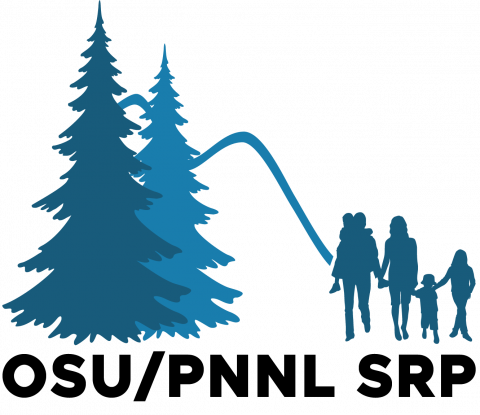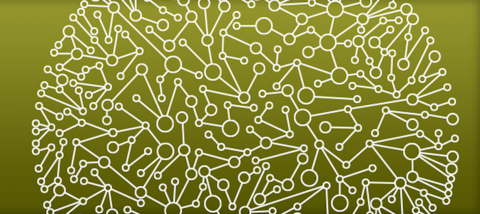The srpAnalytics modeling pipeline for processing new data for the OSU-PNNL Superfund Research Program Analytics Portal located at https://github.com/sgosline/srpAnalytics Data License MIT License Copyright (c) 2020 Sara JC Gosline . Permission is hereby granted, free of charge, to any person...
Filter results
Category
- (-) Scientific Discovery (369)
- (-) National Security (31)
- Biology (258)
- Earth System Science (161)
- Human Health (112)
- Integrative Omics (73)
- Microbiome Science (47)
- Computational Research (25)
- Computing & Analytics (17)
- Chemical & Biological Signatures Science (12)
- Energy Resiliency (12)
- Weapons of Mass Effect (12)
- Chemistry (10)
- Data Analytics & Machine Learning (9)
- Computational Mathematics & Statistics (7)
- Materials Science (7)
- Atmospheric Science (6)
- Data Analytics & Machine Learning (6)
- Renewable Energy (6)
- Visual Analytics (6)
- Coastal Science (4)
- Ecosystem Science (4)
- Energy Storage (3)
- Plant Science (3)
- Solar Energy (3)
- Bioenergy Technologies (2)
- Cybersecurity (2)
- Distribution (2)
- Electric Grid Modernization (2)
- Energy Efficiency (2)
- Grid Cybersecurity (2)
- Transportation (2)
- Computational Mathematics & Statistics (1)
- Grid Analytics (1)
- High-Performance Computing (1)
- Subsurface Science (1)
- Terrestrial Aquatics (1)
- Wind Energy (1)
Tags
- Virology (77)
- Immune Response (51)
- Time Sampled Measurement Datasets (51)
- Differential Expression Analysis (46)
- Gene expression profile data (45)
- Homo sapiens (42)
- Predictive Phenomics (34)
- Mass spectrometry data (32)
- Multi-Omics (32)
- Viruses (27)
- Omics (26)
- Mass Spectrometry (24)
- Health (23)
- Soil Microbiology (23)
- Virus (23)
- MERS-CoV (19)
- Mus musculus (19)
- Proteomics (18)
- sequencing (13)
- West Nile virus (13)
- Genomics (12)
- High Throughput Sequencing (11)
- Influenza A (11)
- TA2 (11)
- Metagenomics (10)
- PerCon SFA (10)
- S. elongatus PCC 7942 (10)
- TA1 (10)
- Ebola (9)
- Microbiome (8)
Showing 316 - 330 of 385
Data Source
OSU-PNNL Superfund Research Program Center is part of the Superfund Research Program (SRP) at Oregon State University, directed by Dr. Robyn Tanguay, bringing together a multidisciplinary team of experts with extensive experience in polycyclic aromatic hydrocarbons (PAHs) research. Using state-of...
Category
Datasets
4
Institution
https://www.nih.gov/about-nih/what-we-do/mission-goals NIH’s mission is to seek fundamental knowledge about the nature and behavior of living systems and the application of that knowledge to enhance health, lengthen life, and reduce illness and disability. The goals of the agency are: to foster...
Category
Despite high sequence similarity between pandemic and seasonal influenza viruses, there is extreme variation in host pathogenicity from one viral strain to the next. Identifying the underlying mechanisms of variability in pathogenicity is a critical task for understanding influenza virus infection...
Category
The broad range and diversity of interferon-stimulated genes (ISGs) function to induce an antiviral state within the host, impeding viral pathogenesis. While successful respiratory viruses overcome individual ISG effectors, analysis of the global ISG response and subsequent viral antagonism has yet...
Category
Systems biology offers considerable promise in uncovering novel pathways by which viruses and other microbial pathogens interact with host signaling and expression networks to mediate disease severity. In this study, we have developed an unbiased modeling approach to identify new pathways and...
Category
The severe acute respiratory syndrome coronavirus accessory protein ORF6 antagonizes interferon signaling by blocking karyopherin-mediated nuclear import processes. Viral nuclear import antagonists, expressed by several highly pathogenic RNA viruses, likely mediate pleiotropic effects on host gene...
Category
Publication
The Systems Biology for Infectious Diseases Research program was established by the U.S. National Institute of Allergy and Infectious Diseases to investigate host-pathogen interactions at a systems level. This program generated 47 transcriptomic and proteomic datasets from 30 studies that...
Category
Respiratory infections stemming from influenza viruses and the Severe Acute Respiratory Syndrome corona virus (SARS-CoV) represent a serious public health threat as emerging pandemics. Despite efforts to identify the critical interactions of these viruses with host machinery, the key regulatory...
Category
The Community Land Model (CLM) is an effective tool to simulate the biophysical and biogeochemical processes and their interactions with the atmosphere. Although CLM Version 5 (CLM5) constitutes various updates in these processes, its performance in simulating energy, water and carbon cycles over...
Category
Last updated on 2024-02-11T22:41:43+00:00 by LN Anderson PNNL DataHub NIAID Program Project: Modeling Host Responses to Understand Severe Human Virus Infections, Multi-Omic Viral Dataset Catalog Collection Background The National Institute of Allergy and Infectious Diseases (NIAID) "Modeling Host...
Category
Datasets
45
Publication
Both highly pathogenic avian influenza virus and Middle East respiratory syndrome coronavirus (MERS-CoV) infections are characterized by severe disease and high mortality. The continued threat of their emergence from zoonotic populations underscores an important need to understand the dynamics of...
Category
The pathogenesis of human Ebola virus disease (EVD) is complex. EVD is characterized by high levels of virus replication and dissemination, dysregulated immune responses, extensive virus- and host-mediated tissue damage, and disordered coagulation. To clarify how host responses contribute to EVD...
Category
Person
Dr. Katrina Waters is the division director for Biological Sciences at the Pacific Northwest National Laboratory. Waters has a Ph.D. in biochemistry and more than 15 years of experience in microarray and proteomics data analysis. Her research interests are focused on the integration of genomics...
Category
Person
Washington State University Distinguished Graduate Research Program Program: Chemical Engineering WSU-PNNL Advisor: Aaron Wright





